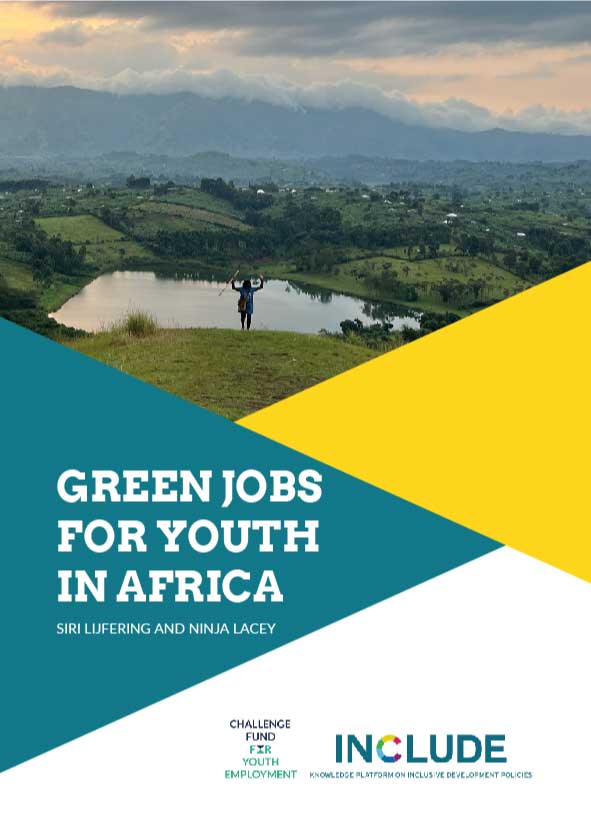This paper is about how to leverage green jobs to realise the transition to a green economy. The first step to achieving this is to create a better understanding of green jobs. To this end, following a literature analysis, we provide a mapping tool to help classify green jobs and measure their (potential) impact. The tool is based on four indicators: (i) sector; (ii) green business strategy; (iii) climate action; and (iv) green skills.
Summary
Dealing with the negative consequences of climate change and creating a large number of jobs for a growing population are two of the major challenges facing the African continent. The transition to a green economy can help tackle both simultaneously. This transition is twofold, along the lines of adaptation and mitigation. On the one hand, it involves making African economies more resilient to the effects of climate change. On the other, it requires investments in renewable energy and more sustainable production processes, in order to reduce Africa’s own emissions. Both of these tracks of the green transition require not only large-scale investments and capital allocation, but also labour. Green jobs, therefore, are essential to make it work.
The mapping tool
This paper provides insights on how to leverage green jobs to realise the transition to a green economy. The first step to achieving this is to create a better understanding of green jobs. To this end, following a literature analysis, we provide a mapping tool to help classify green jobs and measure their (potential) impact. The tool is based on four indicators: (i) sector; (ii) green business strategy; (iii) climate action; and (iv) green skills.
Thereafter, we use these indicators to guide an examination of three case studies of entrepreneurs supported by the Challenge Fund for Youth Employment (CFYE), in the Kenyan construction sector, the Nigerian manufacturing sector and the Ugandan energy sector. The case studies, based on interviews with CFYE staff and the entrepreneurs, also analyse the barriers and drivers of green job creation and improvement within these firms. Based on these findings, we discern four pathways for change to stimulate green jobs growth for youth in Africa:
Model of green job pathways

Findings and recommendations
By using these pathways as guidance, we finally provide ten recommendations on how to enable the green economic transition and the creation of green jobs in Africa.
Finally, reflecting on the findings of this research, we distil a number of key messages regarding the attitude and general approaches that will be required to make successful progress on green jobs. These centre around the need to empower youth, to invest in continuous knowledge building and exchange, and to move away from standalone initiatives towards multistakeholder approaches to achieve greater impact.
We conclude that the green transition has the potential to create a plurality of job opportunities for youth in Africa, but that there is still a long way to go before this potential can be fulfilled. Concerted political will is needed to stimulate green job sectors and green employment and to create realistic pathways to the green economic transition. Strengthening the evidence-base on green jobs and showing the potential of greening the economy for youth in Africa is an important first step.
